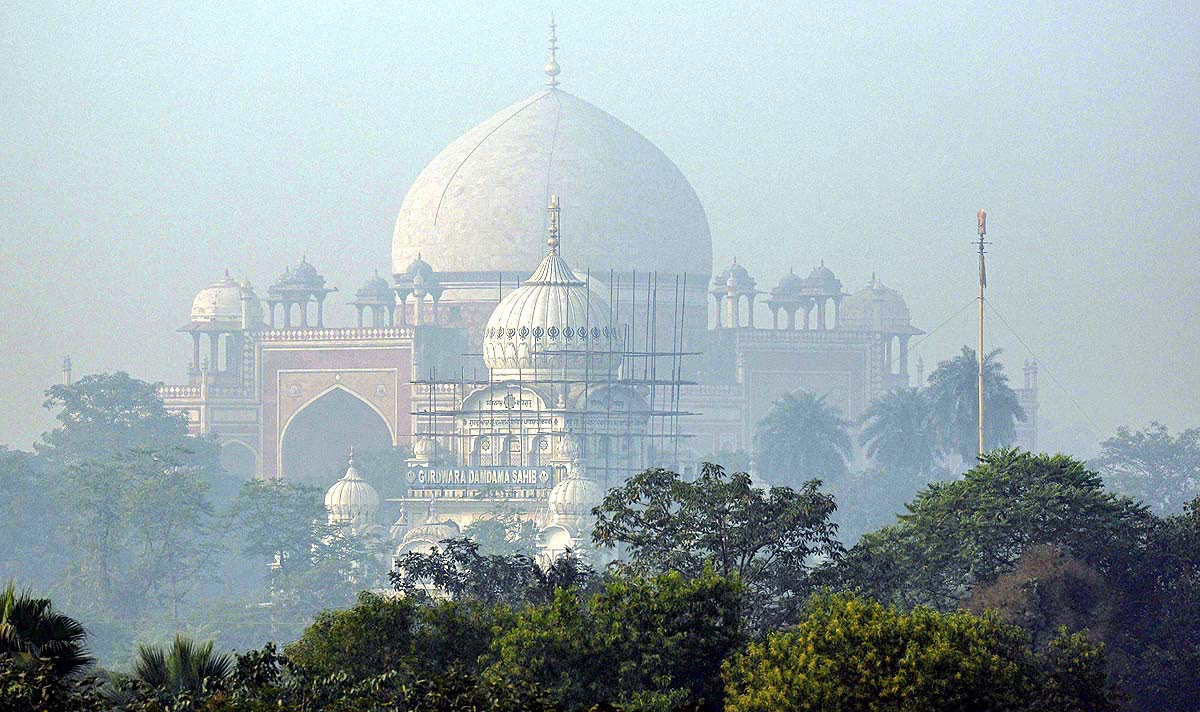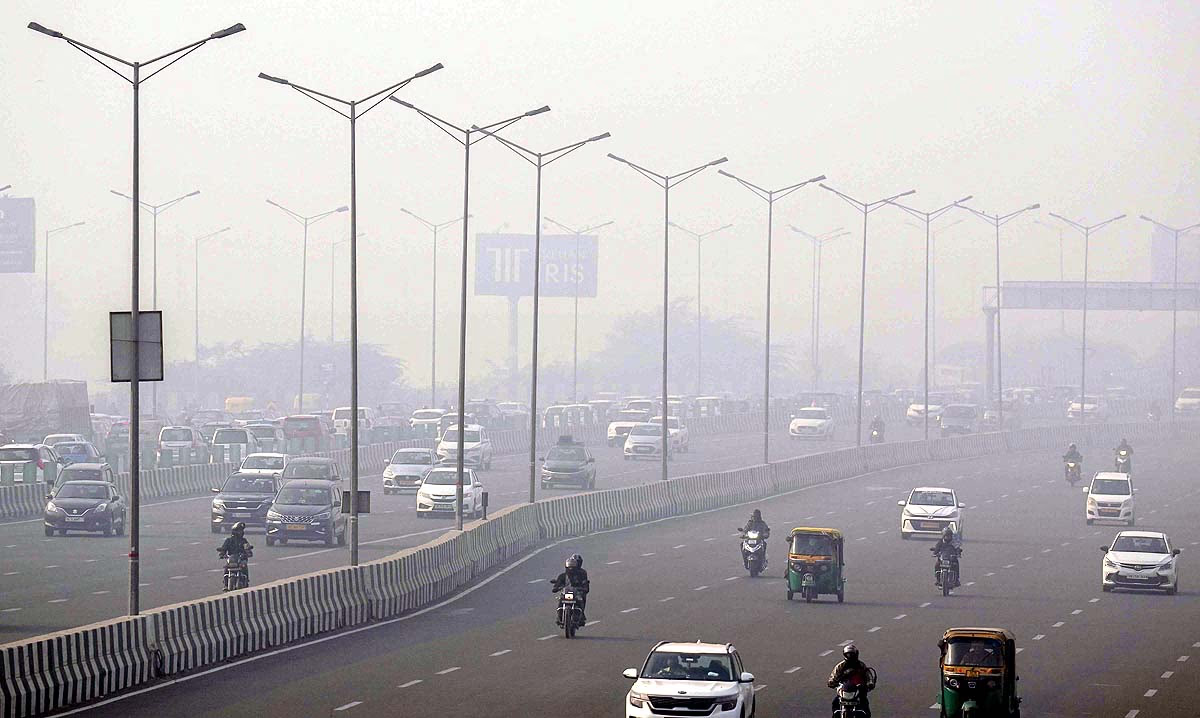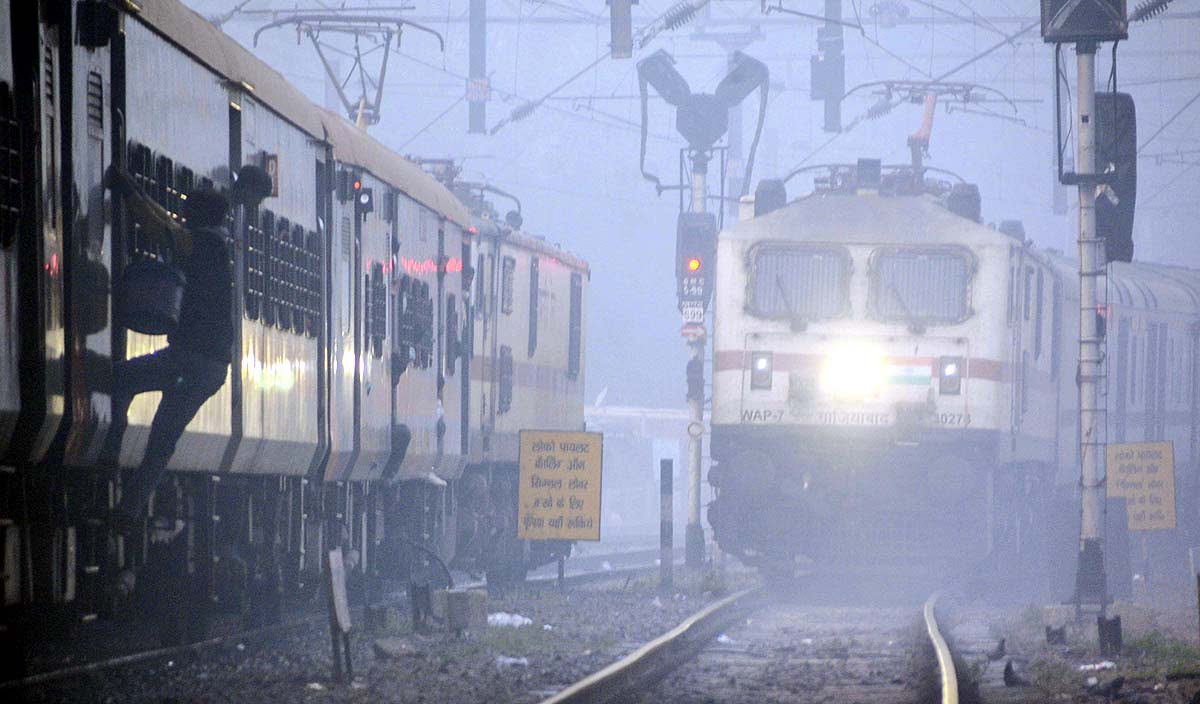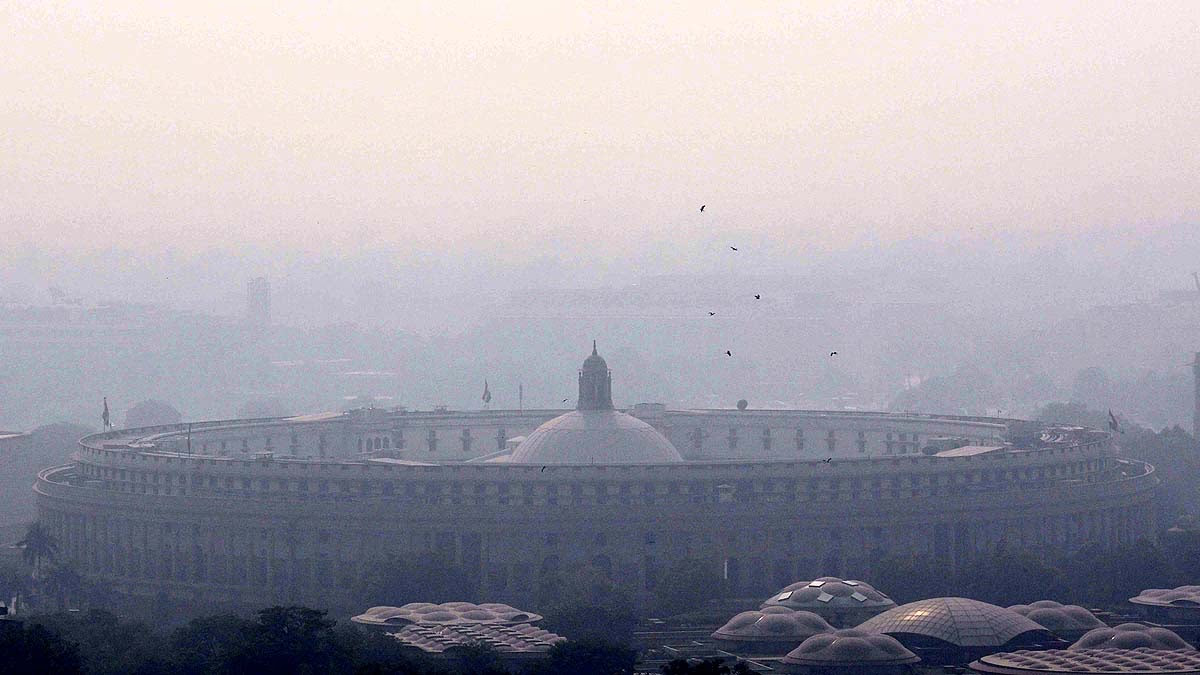As winter settles in Delhi and adjoining areas (NCR), the lethal air once again suffocates its residents. At dawn, a thick veil of smog cloaks the city, blurring the streets. The Air Quality Index (AQI) has soared beyond 400, considered 'severe'.
In areas like Rohini and Vivek Vihar, AQI touched 458. People venture out with masks, asking the pressing question – when will the smog lift? How long must Delhi's denizens breathe this toxic air? Let's delve into the causes and explore future possibilities.
Also Read:
By 9 AM today, Delhi's average AQI hovered at 479. As per the Central Pollution Control Board (CPCB), 20 out of 39 monitoring stations recorded AQI over 400. PM2.5 levels were at 315 micrograms per cubic meter, while PM10 reached 421 micrograms per cubic meter.

Source: aajtak
According to the World Health Organization (WHO), the safe PM2.5 level is only 15 micrograms, meaning Delhi's air is 20 times more hazardous today. Noida's AQI was at 396, Ghaziabad 432, Gurugram 291, and Faridabad 239.
In most NCR regions, air quality remains 'very poor' or 'severe'. People are apprehensive about stepping out. At India Gate, protestors have taken to the streets, demanding the government address the core issue rather than spraying water.
Smog is not mere fog; it's a mixture of haze and smoke, composed of minute particles. Scientifically, Delhi experiences two types of smog – photochemical and winter smog. The latter is more troubling here.
Also Read:
Stubble Burning:
Farmers in Punjab, Haryana, and Uttar Pradesh burn stubble after harvesting crops. This smoke travels to Delhi. In November, this issue intensifies. Satellite data suggests that stubble burning increases pollution by up to 45% in 2025. It releases gases like carbon, nitrogen, and ammonia, forming PM2.5 particles that penetrate lungs.
Vehicle Emissions:
More than 10 million vehicles run daily in Delhi, burning petrol and diesel, emitting nitrogen oxides (NOx) and carbon monoxide (CO). These gases react with sunlight to form ozone, thickening the smog. Traffic jams aggravate the problem significantly.
Industry and Construction:
Hundreds of factories in Delhi-NCR burn coal for electricity, emitting sulfur dioxide (SO2). Dust from construction sites raises PM10 levels. Studies indicate construction contributes to 38% of PM2.5 and 56% of PM10 pollution.

Source: aajtak
Temperature Inversion and Low Wind:
This is a major scientific cause. During winter nights, the ground cools while the air above remains warm, trapping pollutants near the ground. Wind speeds are just 3-8 kilometers per hour, insufficient to disperse the smoke, resulting in a smog layer that impedes breathing.
Other Sources:
Burning wood or dung for cooking, landfill fires, and Diwali crackers. These activities collectively form aerosols, pollutants suspended in the air. Scientists warn that PM2.5 is so minute it merges with the bloodstream, damaging lungs and heart.

Source: aajtak
Forecasts from the Indian Meteorological Department (IMD) and IITM suggest relief is still some time away. From November 24 to 27, AQI is expected to remain in the 'severe' category. Temperatures will drop to 8-9 degrees, intensifying inversion. With little wind or rain, smog may persist until November 28.
The stubble burning season will end by late November, but vehicle and industrial pollution will continue. A change in wind direction or light rain could lower AQI to 300, but experts caution – without long-term measures, this problem will recur annually.
Pollution control measures under the Graded Response Action Plan (GRAP) Stage 3 are already in place, including online school classes, halted construction, and a ban on truck entry. While the Commission for Air Quality Management (CAQM) attempted cloud seeding, experts argue it's less effective in dry conditions. Financial incentives for farmers to avoid stubble burning haven't fully succeeded.

Source: aajtak
This smog doesn't just sting eyes or cause a cough; it damages lungs, exacerbates asthma, and causes heart ailments. The 2023 Global Air Report states pollution accounts for 30% of deaths in India. Over 10,000 people are affected daily in Delhi. Children, the elderly, and pregnant women are most at risk. Doctors advise wearing N95 masks, using air purifiers at home, and avoiding outdoor exposure.
Smog is not merely a seasonal issue but a result of human actions. Scientists suggest promoting electric vehicles, installing filters in factories, providing machines to farmers to avoid burning stubble. Long-term, planting more trees and enhancing weather forecasting could help. But the question remains – when will the government and citizens unite to take action?




